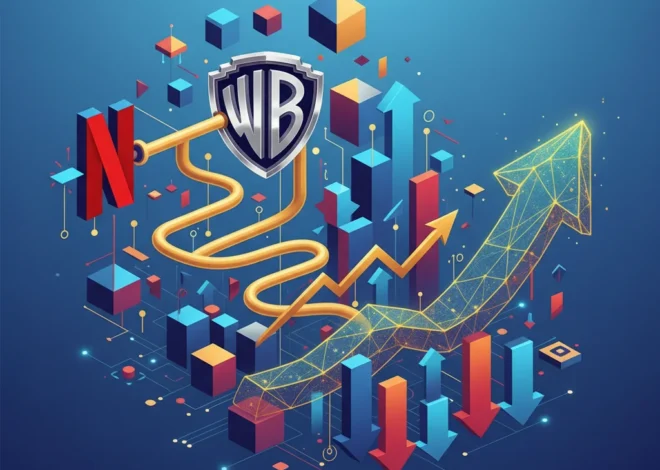
Beyond the Breach: The Hidden Financial Fallout of the Asahi Cyber-Attack
The Unseen Threat: When Digital Risk Cripples Physical Production
In the modern economy, the line between the digital and physical worlds has all but vanished. A line of malicious code can now halt a production line as effectively as a mechanical failure. This stark reality was brought into sharp focus when Asahi Group Holdings, the Japanese beverage giant, fell victim to a debilitating cyber-attack. While the initial headlines focused on the operational disruption—a complete stall of beer production across Japan—the incident serves as a critical case study for investors, finance professionals, and business leaders on the profound and often underestimated financial consequences of cyber threats.
The attack, initially reported by the BBC, was far more than a temporary inconvenience. It was a sophisticated ransomware incident that encrypted servers, compromised systems, and raised the alarming possibility of significant personal data theft. For a company reliant on intricate supply chains, just-in-time manufacturing, and consumer trust, the attack struck at the very heart of its operations and value proposition. This event is not an isolated anecdote; it is a microcosm of a systemic risk that now permeates every corner of the global economy, demanding a new level of diligence in financial analysis and investing strategy.
Deconstructing the Asahi Attack: A Cascade of Failures
In mid-January 2022, Asahi’s operations ground to a halt. The culprit was a ransomware attack, a form of malware that encrypts a victim’s files, rendering them inaccessible until a ransom is paid. The attackers targeted Asahi’s units in Japan and Oceania, impacting everything from production and logistics to sales and accounting. The immediate effect was a complete stoppage of orders and manufacturing at its Japanese breweries, a catastrophic event for a high-volume consumer goods company.
The implications quickly spiraled beyond the factory floor:
- Operational Paralysis: The inability to process orders or manage inventory created an immediate revenue gap and threatened to damage relationships with distributors and retailers.
- Supply Chain Disruption: A halt at a major manufacturer like Asahi sends shockwaves up and down the supply chain, affecting suppliers of raw materials and partners in logistics and retail.
- Data Breach Concerns: The company confirmed that personal data of customers and business partners may have been compromised, opening the door to regulatory fines, legal action, and a severe erosion of consumer trust.
- Reputational Damage: In a competitive market, brand trust is a priceless asset. A major security failure can tarnish a company’s reputation for years, influencing consumer purchasing decisions and making it harder to attract and retain talent.
Understanding these cascading effects is crucial for anyone involved in corporate finance. The direct costs of remediation are often just the tip of the iceberg compared to the long-tail financial damage caused by operational downtime and loss of goodwill.
The Stock Market’s Verdict: Pricing in Cyber Risk
For investors, the most immediate barometer of a crisis is the stock market. While a single event’s impact can be complex to isolate, studies consistently show that data breaches have a tangible, negative effect on a company’s valuation. Research from Comparitech found that, on average, a company’s share price drops by 7.27% after a breach, underperforming the NASDAQ by -4.18% (source). The market’s reaction is not just about the immediate cleanup costs; it’s a re-evaluation of the company’s long-term health, factoring in new perceptions of risk and management competency.
In the world of high-frequency trading and algorithmic analysis, news of a cyber-attack is a significant red flag. It signals potential weaknesses in corporate governance, a lack of investment in critical infrastructure, and future financial liabilities. For finance professionals conducting due diligence, a company’s cybersecurity posture is no longer a footnote in the IT section; it’s a core component of operational and financial risk assessment. The Asahi incident underscores the need for investors to scrutinize not just balance sheets, but a company’s resilience to modern digital threats.
The Broader Economic Impact of Cyber Insecurity
The financial pain of a cyber-attack is not confined to the victim organization. These events have macroeconomic consequences that ripple through the entire economy. The Colonial Pipeline ransomware attack in 2021, for instance, led to fuel shortages across the U.S. East Coast, demonstrating how a single digital breach can disrupt critical national infrastructure.
To contextualize the scale of this issue, consider the financial impact of some other major corporate cyber-attacks. The following table illustrates the staggering costs associated with these breaches, which extend far beyond any ransom paid.
Below is a summary of estimated financial impacts from several high-profile corporate cyber-attacks, highlighting the immense scale of the potential losses.
| Company | Year of Attack | Estimated Financial Impact | Nature of Attack |
|---|---|---|---|
| Equifax | 2017 | Over $1.4 Billion | Data breach of personal information |
| Merck & Co. | 2017 | Over $1.3 Billion | NotPetya ransomware/wiper attack |
| British Airways | 2018 | $230 Million (initial fine) | Data breach of customer details |
| Maersk | 2017 | $300 Million | NotPetya ransomware/wiper attack |
| Colonial Pipeline | 2021 | $4.4 Million (ransom) + significant economic disruption | Ransomware |
Sources: Various public reports and company filings.
These figures, compiled from public reports and company statements, showcase a clear trend: the cost of cyber failure is astronomical. This reality is reshaping the field of economics, as analysts now must model for digital-era “black swan” events that can erase billions in value overnight. The rise of a sophisticated cybercrime economy, often facilitated by cryptocurrencies and blockchain technology for anonymous payments, presents a persistent and evolving threat that traditional financial models struggle to account for.
Fortifying the Digital Fortress: A Strategic Imperative
The lessons from the Asahi breach are clear: cybersecurity is not a cost center; it is a strategic investment in business continuity and shareholder value. For business leaders and boards, the focus must shift from reactive cleanup to proactive defense and resilience. This involves a multi-layered approach:
- Investment in Modern Security: This goes beyond basic firewalls. It means investing in advanced threat detection, zero-trust architecture, and robust data backup and recovery systems. The world of financial technology (fintech) and banking often leads the way, and other industries can learn from their heavily regulated and security-focused postures.
- Board-Level Governance: Cybersecurity can no longer be delegated solely to the CIO or CISO. The board of directors must have oversight and a clear understanding of the company’s cyber-risk profile. It is a fundamental aspect of modern corporate governance.
- Incident Response Planning: The question is not *if* an attack will happen, but *when*. A well-rehearsed incident response plan can mean the difference between a manageable event and a corporate catastrophe. This plan must include communications strategies for investors, customers, and regulators.
- Employee Training: The human element remains the weakest link. Regular, sophisticated training to recognize phishing and social engineering attempts is one of the most cost-effective security investments a company can make.
For the investment community, the Asahi incident is a call to action. Analysts must integrate cybersecurity diligence into their valuation models. A company with a weak security posture and no clear strategy for digital resilience is carrying a hidden liability that could decimate its future earnings and market position. According to IBM’s 2023 Cost of a Data Breach Report, the global average cost of a data breach reached an all-time high of $4.45 million, a 15% increase over 3 years (source). This is a material risk that can no longer be ignored.
Conclusion: The New Bottom Line in a Digital World
The cyber-attack on Asahi was more than a production problem for a beverage company. It was a stark reminder that in our interconnected world, digital vulnerability is business vulnerability. The incident highlights a critical inflection point for corporate leaders and the financial community. The ability to defend against, respond to, and recover from a sophisticated cyber-attack is now a core competency that directly impacts a company’s financial stability, market valuation, and long-term viability.
As we move forward, the language of cybersecurity must become fluent in the boardroom and on Wall Street. Terms like “ransomware,” “data integrity,” and “zero-trust” are as fundamental to modern risk assessment as “debt-to-equity ratio” and “P/E multiple.” The companies that thrive in the coming decade will be those that treat their digital infrastructure with the same seriousness as their financial capital. For investors, the lesson is equally clear: in the 21st-century economy, you can’t calculate the value of a business without first understanding its vulnerabilities.


